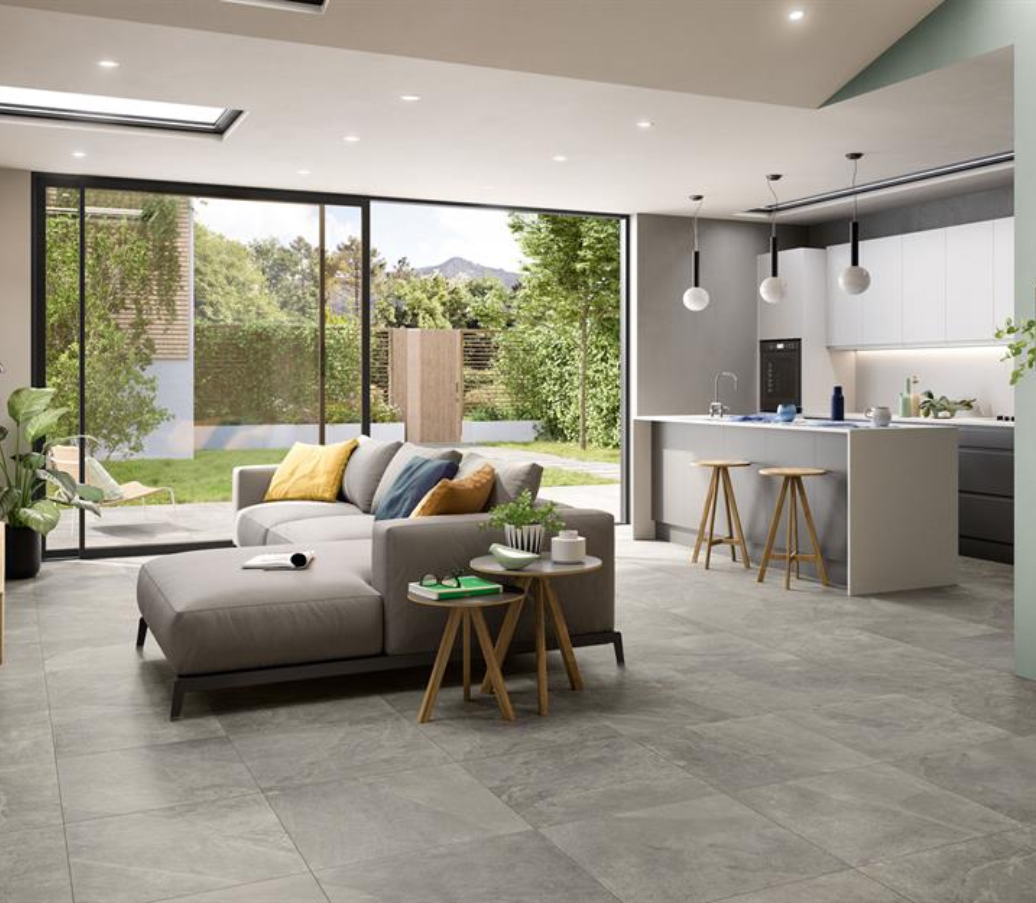LVT vs WPC Vinyl Differences
Construction – The construction of LVT and WPC vinyl is the biggest difference between these two types of vinyl. A vinyl floor has a simple PVC core that is a rubber product, allowing it to move easily and be flexible. A WPC vinyl has a core made of a wood plastic composite, that gives the floor a solid, stable feel.
Plank Thickness – WPC vinyl floors will be thicker than a standard LVT vinyl. WPC vinyl flooring usually ranges from 5mm to 8mm, while a traditional LVT will be 4mm or less.
Sturdiness – With the difference in core materials, the WPC vinyl is going to be significantly more dimensionally stable than a traditional LVT. The sturdiness aids in helping the floor feel softer underfoot and be more resilient with dents and wear.
Appearance – WPC vinyl flooring is made with the latest digital imaging technology and has a similar look and feel to hardwoods and stone tiles. When it comes to traditional LVT, these floors have more of a vinyl look and feel due to the thin plank structure. Higher end traditional LVT will have a realistic top imaging appearance, but budget LVT options will not look as realistic as a WPC vinyl floor.
Subfloor – A traditional vinyl is thin and flexible, which makes it less forgiving with subfloor imperfections. With a WPC vinyl, you have a thicker plank that will compensate for most minor subfloor imperfections.
Installation – You can find traditional LVT planks with a glue down, loose lay or click lock installation. For most WPC vinyls on the market, they will be a DIY click lock system.
Comfort Under Foot – Due to the construction of the rigid cores, the WPC vinyl will be softer on the foot than an LVT vinyl. WPC vinyls use a foaming agent within the core to give it added cushion. A traditional LVT vinyl will be thin and will not add much support on top of the subfloor. Underlayments can be used for both traditional LVT and WPC floors as long as they are 4mm or thicker.
Dent Resistance – Traditional LVT floors are soft and pliable, which means heavy furniture can easily dent the material. A WPC vinyl will not be as easy to dent due to the rigid core construction.
Price – A traditional LVT floor will be less expensive than a WPC vinyl. If you’re looking for a budget friendly option, a traditional LVT will be your best bet. If you’re looking for something more substantial, it is worth the extra cost per square foot to upgrade to a WPC vinyl.
Traditional LVT vs WPC Vinyl Similarities
100% Waterproof – Both the traditional LVT and WPC vinyls are 100% waterproof. These floors will not have damage or fluctuate when exposed to moisture.
Available Decors – Although the look and feel of traditional LVT and WPC vinyl will differ, each of these floors come in a wide variety of looks, decors and colors. You can find planks in any style you are seeking!
Application – Traditional LVT and WPC vinyls can be installed below, on and above grade. They are perfect for areas such as kitchens, laundry rooms, bathrooms and basements. Each type of vinyl is also great for commercial applications.
Maintenance & Cleaning – Cleaning and maintenance is a breeze with traditional LVT and WPC vinyl flooring. Regular sweeping mixed with occasional deep cleaning is all you need to keep these floors looking great.



